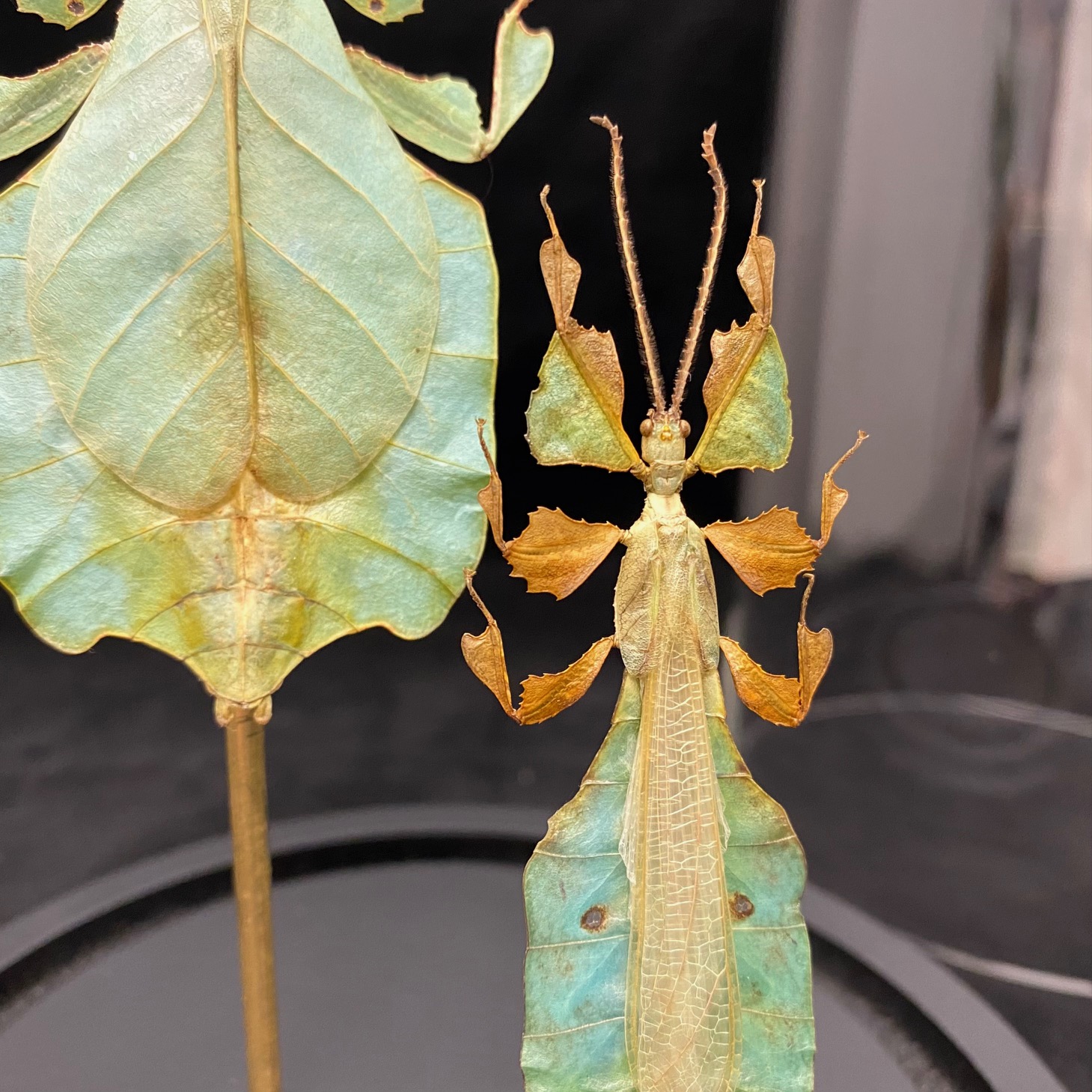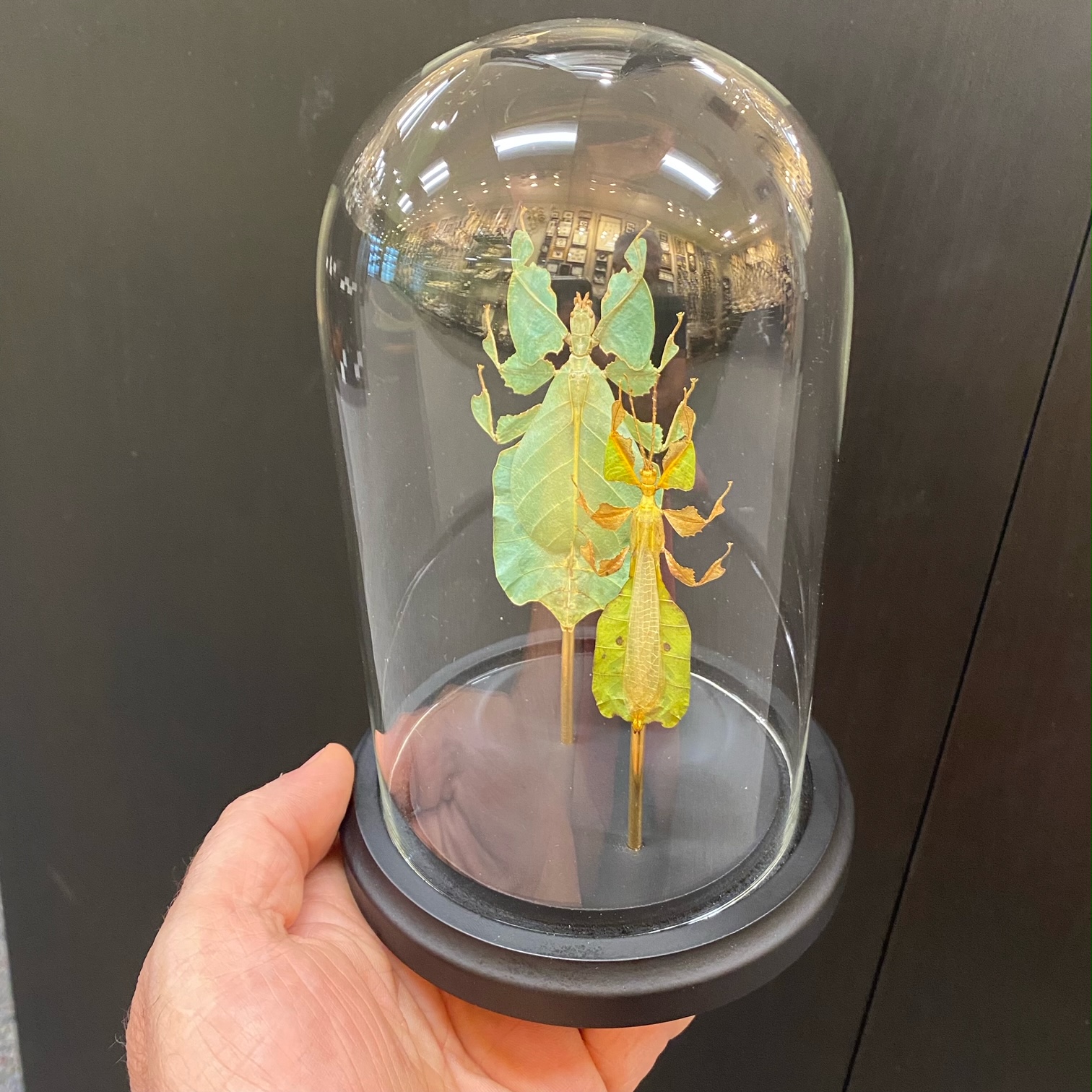Description
Beautiful Leaf Mimic Pair, mounted in a glass dome. The male is the smaller of the two specimens.
Also known as the Javanese leaf insect, or Gray’s leaf insect, this leaf insect is native to tropical Asia as well as Madagascar, Mauritius and the Seychelles.
Javanese leaf insects are slow-moving herbivores that rely on their camouflage and fore wings for defense from predators, including birds, amphibians and reptiles. The females live from 4 to 7 months and males from 3 weeks to 1 month.
This piece is mounted in a dome that is 5 1/2 inches wide and 8 1/2 inches tall (including the base).
**Leaf Mimic: Nature’s Master of Disguise**
A leaf mimic is an extraordinary creature that has evolved to blend seamlessly into its surroundings, using its incredible camouflage skills to evade predators. Whether through shape, color, or texture, these fascinating animals resemble leaves so closely that they are nearly indistinguishable from their leafy counterparts. Leaf mimics can be found in a variety of species, from insects and reptiles to amphibians and even some birds, all of which use their natural disguise to survive in the wild.
**Masterful Camouflage: A Survival Strategy**
The leaf mimic’s ability to imitate leaves is a brilliant survival strategy. Insects like leaf insects (*Phyllium*) and leaf-tailed geckos (*Uroplatus*) are among the most well-known examples. These creatures have evolved bodies that mimic the size, shape, and even the veins of leaves, making them nearly invisible to predators. Some even go a step further, adopting a lifeless posture that imitates a fallen, decaying leaf, adding another layer of deception. This makes it extremely difficult for birds and other predators to distinguish them from actual foliage.
**Leaf Mimics in the Wild**
Leaf mimics are typically found in dense forests or jungles, where their ability to blend in with the surroundings offers protection from predators. Many species, such as the Malaysian leaf insect, not only mimic the appearance of leaves but also their movement. By swaying gently in the breeze, they further enhance the illusion that they are part of the vegetation around them. This incredible adaptation allows leaf mimics to remain undetected by predators and even prey upon smaller insects without fear of being seen.
**Ecological Importance**
Beyond their impressive disguise, leaf mimics play a significant role in the ecosystem. By blending in with their environment, they help maintain the balance of their habitats. They also serve as prey for various predators, contributing to the food chain.
The leaf mimic is a testament to the wonders of evolution, showcasing how nature’s ingenuity can create perfectly camouflaged creatures that thrive in the wild through the art of deception.
Enjoy this Beautiful Leaf Mimic Pair.
Leaf Mimic, Phyllium mamasaense Female Yellow, Papered specimen

























